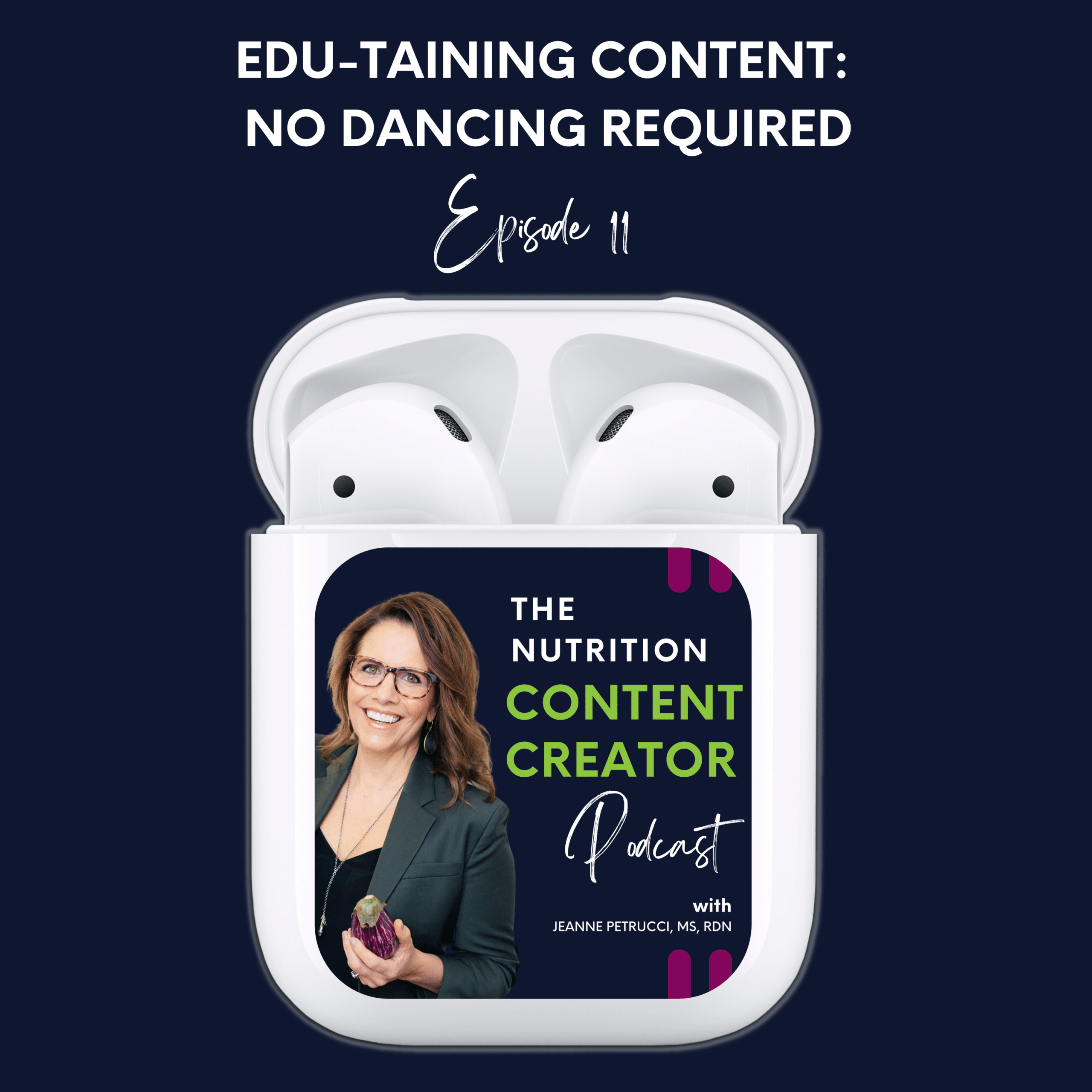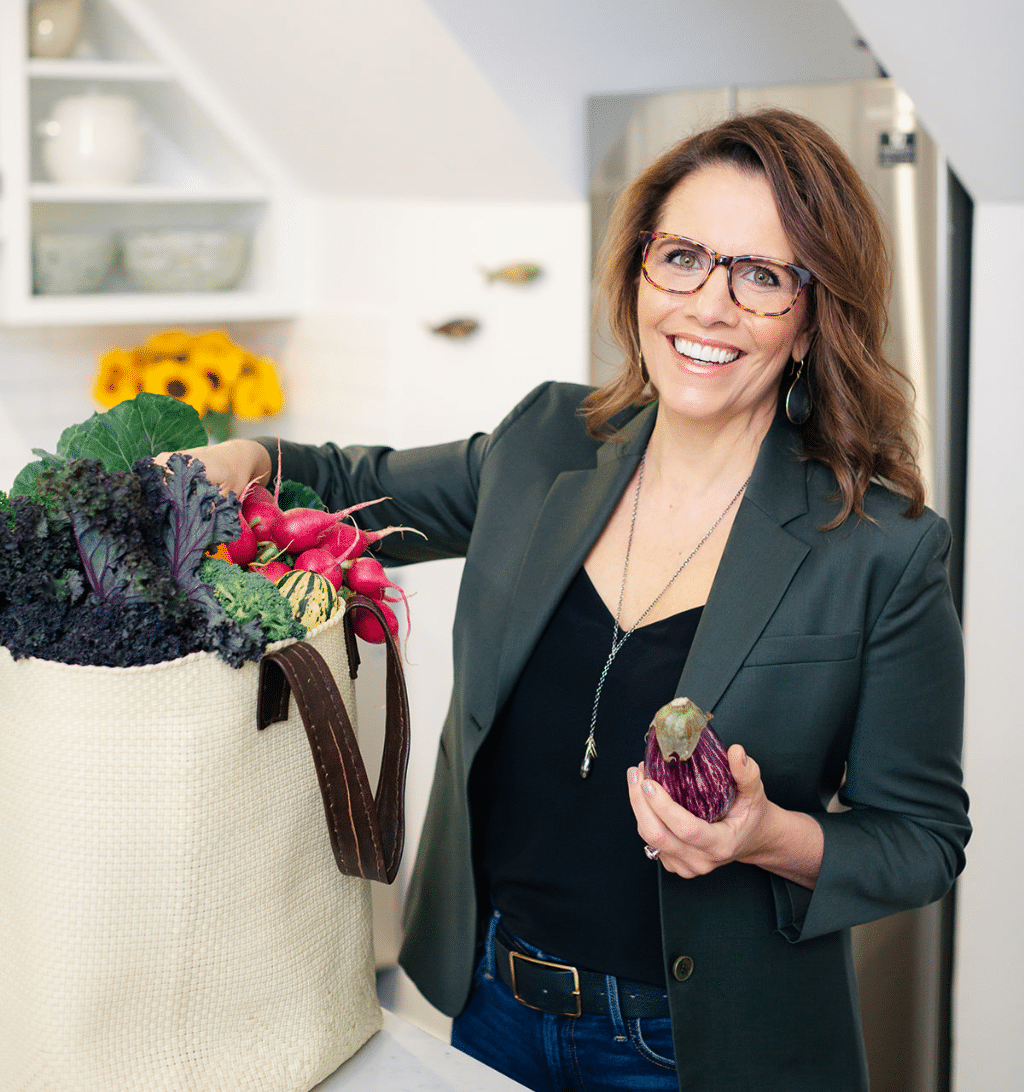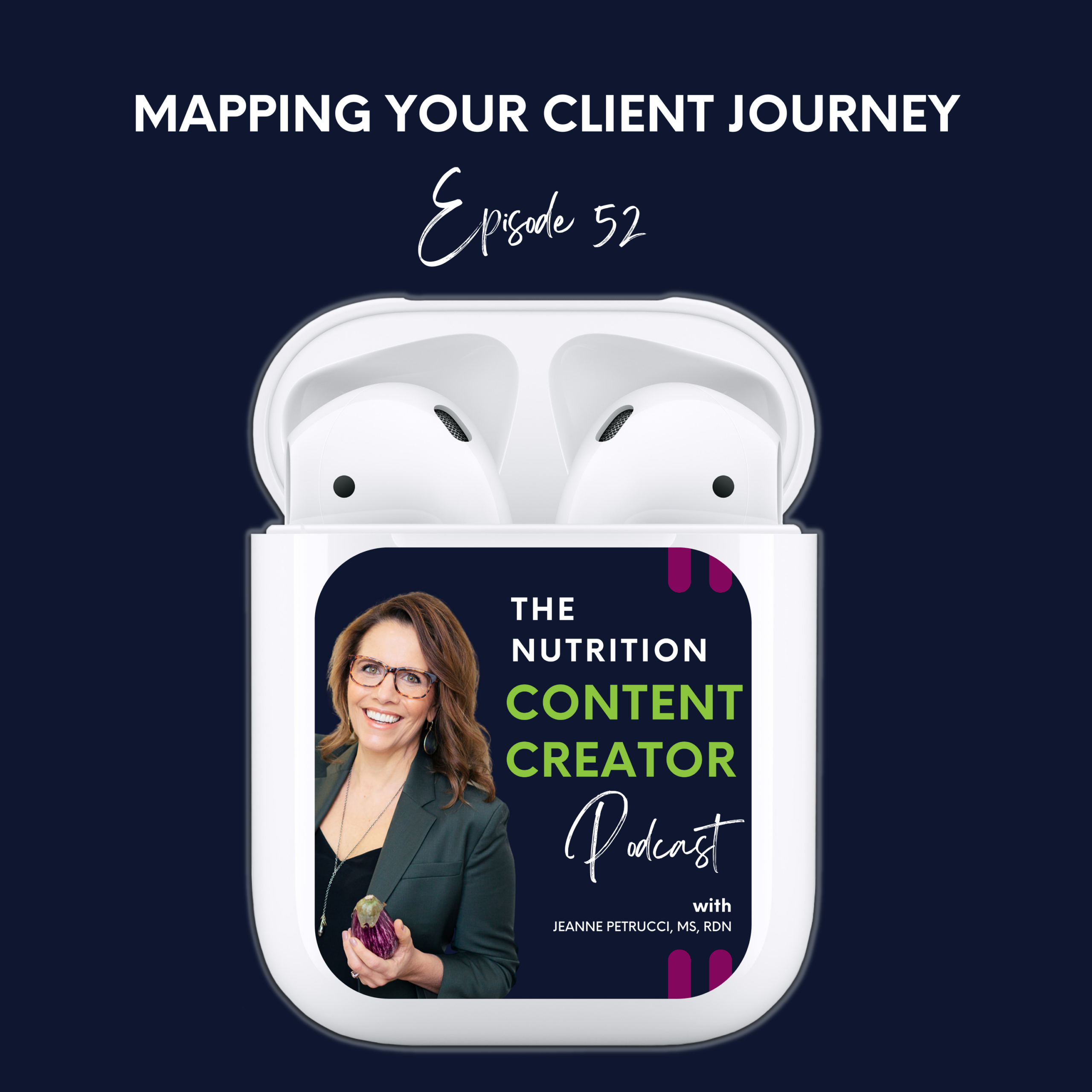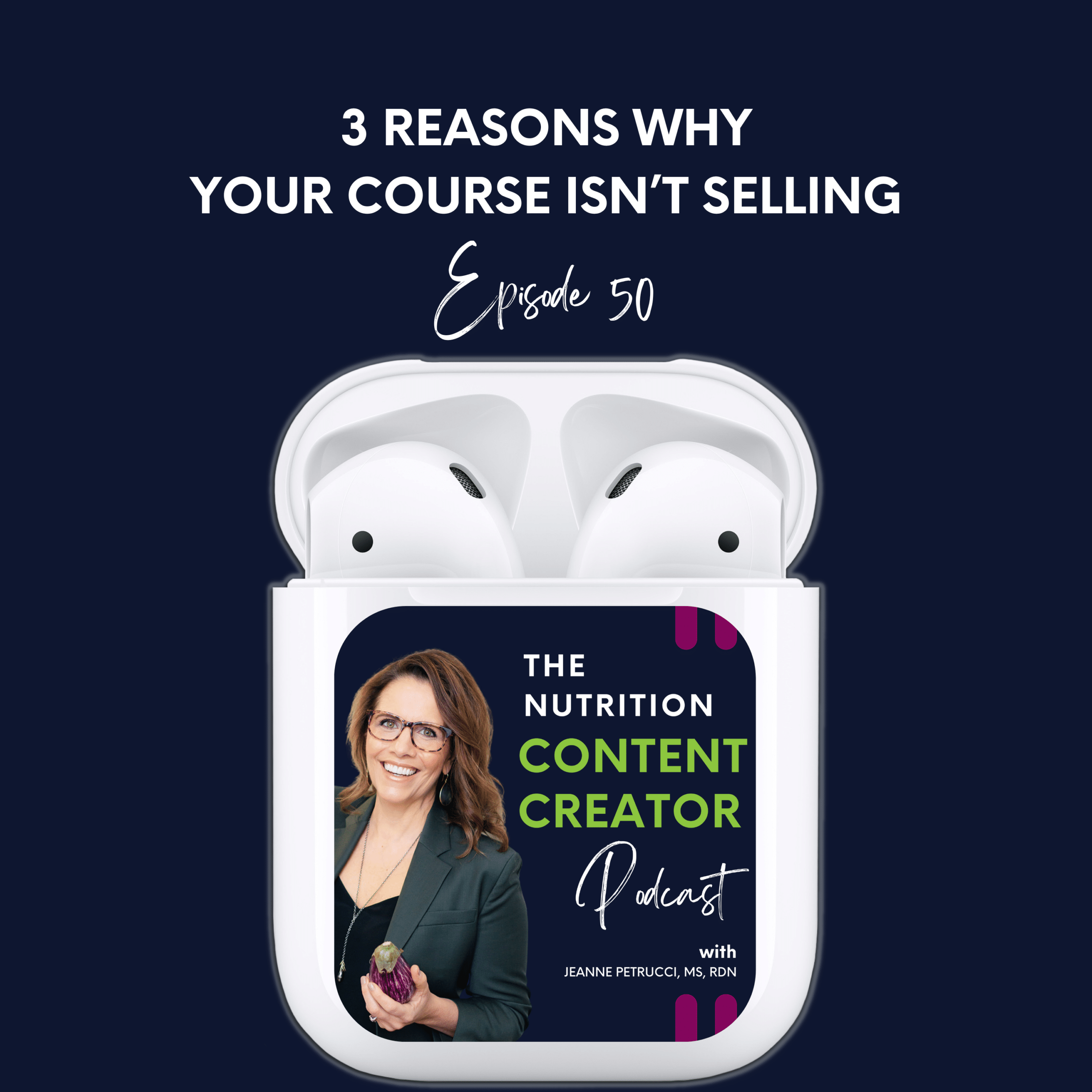11. Edu-taining Content: No Dancing Required

At a young age, I recognized what it took to get attention, the value of having a louder voice, and a space with more people to listen. I think I was destined to be doing what I do now and having a space where I can still “sing” with my microphone to an audience on this podcast. There are so many ways you can leverage the concept of edutainment in your practice to get the right kind of attention that doesn’t include dancing on camera, lip-syncing to trending sounds, pointing to text, or using a microphone with an amplifier. Of course, you can feel free to do that, I do it sometimes. But it is not necessary and I think it’s worth identifying other ways you can make your content more entertaining without being uncomfortable. Today we are going to explore the value of entertaining education, also known as Edu-tainment, and how you can transform the same content you use in practice with clients into something more engaging and captivating for your audience outside of the counseling room. This obviously includes social media but it really extends to all interactions you have with your ideal clients when they aren’t actively working with you. We’ll cover:
- The concept of Edu-tainment
- Edu-tainment as a strategy
- The delivery of Edu-tainment
Your Megaphone
Do you know what’s truly fascinating? The only substantial difference between the content we use in our practices and the content we share on social media isn’t the core information itself. that’s ALWAYS evidence-based and informative, it’s the amplification of the message. Think of social media as a megaphone. It amplifies our voices, allowing us to reach an audience far beyond the confines of our consultation rooms. Our task, then, is not to create new content from scratch, but rather, to repackage our existing knowledge, the evidence-based nutritional advice we provide every day, in a way that’s entertaining, engaging, and accessible. Remember, the quality and credibility of your information are constants, but the way you package it for social media can vary. So, don’t be afraid to get creative and inject some fun into your posts. At the end of the day, it’s still the same content, but with a layer of entertainment on top.
Evidence for Edu-tainment
Let’s start by exploring what ‘Edu-tainment’ really means and its potential impact on your community. You might be thinking it’s about performing, putting on a show, or turning yourself into an entertainer [a la me 54 years ago]. That’s intimidating for most – we didn’t sign up for this when we chose to be health and wellness professionals. But here’s the thing – in most cases, it’s not about performing. It’s about transforming your valuable knowledge into something digestible and engaging. Is this strategy effective? Let’s take a look a few studies that explored the impact of edutainment on health-related behaviors: In the systematic review “Entertainment-Education Interventions for Health Issues in Adults” published in 2017 researchers found that edutainment interventions generally led to substantial improvements in three primary areas: knowledge, attitudes, and behaviors. In terms of knowledge, these interventions helped enhance participants’ understanding of various health issues. Regarding attitudes, the interventions were able to influence and modify the participants’ perspectives and feelings toward these health issues. And finally, they found that these interventions also brought about changes in the health-related behaviors of the participants, which is often the most challenging aspect to influence. In another paper, “Entertainment-Education and Health Promotion”, the authors present a thorough review of the use of entertainment-education (E-E) strategies in the field of health promotion. The authors critically examined multiple E-E strategies and found them to be generally effective in promoting knowledge about various health issues, changing people’s attitudes toward these issues, and influencing health-related behaviors. One key finding was that edutainment strategies are powerful tools in educating the public: they can help increase understanding and awareness of various health issues. Furthermore, these strategies were shown to effectively shift attitudes, leading to a more positive and proactive stance toward health matters. Perhaps most importantly, edutainment strategies were found to directly influence health-related behaviors. This suggests that properly implemented edutainment strategies can lead to concrete, positive changes in people’s day-to-day lives, such as adopting healthier eating habits, exercising more, or making more regular appointments for health check-ups. However, the authors also note that the effectiveness of E-E strategies can vary based on a number of factors. One such factor is the design of the message: how it’s framed, what emotions it evokes, the clarity of its call to action, etc. For example, messages that provoke strong emotional responses or that are presented in a relatable way may be more effective at influencing attitudes and behaviors. The cultural context in which the message is received also plays a critical role. Edutainment strategies must be culturally sensitive and relevant to the audience they’re meant to reach. The strategies should be tailored to take into account the audience’s cultural values, norms, and experiences.
The Delivery: Shifting Your Perspective
Now that we’ve defined and made a case for using Edu-tainment as a strategy let’s reflect on our perspective. Think about the content you use in your professional practice. It’s packed with valuable information, right? But when we’re communicating to the public, to our clients, that same information can sometimes feel dry, technical, or overwhelming. For example, a handout on Vitamin C. Informative, yes. Important for optimal health, yes. Effective learning tool, sure. Engaging? Not so much. We need to take this valuable content, with the same expertise, but now packaged in a way that’s more engaging and resonates with your audience. In its current form, the Vitamin C handout is a solid source of important nutrition education. Let’s explore five Key Strategies to make this content more engaging: 1. Storytelling: Stories are a great way to make content more engaging. Instead of just listing out the benefits and sources of Vitamin C, try telling a story about a client who started eating more Vitamin C-rich foods and saw significant improvements in their skin. People relate to stories and they’re more likely to remember them. Let me introduce you to my client Julia. Julia is a 35-year-old software engineer who loves her job but was starting to feel the toll of long hours spent in front of a computer screen. The late-night coding sessions were starting to reflect on her face. She came to me with dull skin that even the best filter couldn’t hide. As we went through her dietary habits, I found that Julia was missing out on some key nutrients – one of them being Vitamin C. I explained to her how Vitamin C is a secret weapon for skin health. It helps with collagen production, which keeps the skin firm and reduces signs of aging. Julia began to make changes – starting her day with a homemade smoothie, loading it up with Vitamin C-rich foods like kiwi, strawberries, and even a handful of kale. She also introduced bell peppers into her diet as a crunchy snack. Within a month, the transformation was hard to ignore. Julia’s skin had a newfound glow, the dullness was replaced with a healthy color. She came to me during our follow-up visit, beaming, ‘I didn’t know a diet change could do this!’ 2. Visuals: Incorporate interesting and relevant visuals. Instead of text-based content, imagine a vibrant infographic that highlights the benefits of Vitamin C, its sources, and its role in the body. Visuals are processed faster by the brain and can make your content more engaging. Original Content: Text-based paragraph on Vitamin C Visual Take: 3-page graphic carousel post with the title “Vitamin C: Your Health’s Secret Weapon”. The carousel is split into three vibrant sections: Slide 1: “The Super Powers of Vitamin C”, is filled with fun icons representing the benefits of Vitamin C. A small, radiant sunshine icon next to a fact about Vitamin C supporting the immune system, and a collagen molecule next to the fact about Vitamin C aiding collagen production for skin health. Slide 2: “Where to Find Your Vitamin C Heroes”, showcases beautiful, colorful images of oranges, strawberries, bell peppers, and kale, each with a note on their Vitamin C content per serving. Slide 3: The final section, “Vitamin C in Action”, features a simple, stylized infographic of a human body with arrows showing how Vitamin C is absorbed and utilized in different parts of the body. Visual content like infographics can be very effective in conveying complex information in a digestible way, as well as adding entertainment value to your educational content. 3. Interactive Content: Consider creating interactive content like quizzes or polls. For instance, a quiz about sources of Vitamin C or a poll about favorite Vitamin C-rich foods can help engage your audience and make learning more fun. Transform your content into an interactive quiz titled “How Well Do You Know Your Vitamin C?”. This quick quiz could have questions like:
- Which of the following foods has the most Vitamin C per serving? a. Oranges b. Strawberries c. Red bell peppers d. Kale
- True or False: Vitamin C can help your body absorb plant-based iron.
Each question not only tests your audience’s knowledge but also subtly educates them on the benefits and sources of Vitamin C. Or, consider conducting a fun poll on your social media platforms, such as “Which Vitamin C-rich food is your go-to?”. Provide options like oranges, strawberries, bell peppers, and kale. You could even encourage your audience to share their favorite recipes featuring these foods in the comments. Interactive content like this not only imparts information but also stimulates engagement and dialogue with your audience. It allows your audience to actively participate in the learning process, making it more enjoyable and memorable for them. Plus, it gives you insights into your audience’s knowledge and preferences, which can guide future content creation. 4. Humor: If it suits your brand and your audience, don’t be afraid to add a touch of humor. A funny cartoon or a light-hearted joke can make the content more enjoyable and help it stick in your audience’s mind. Original Content: “Including Vitamin C in your diet is not just important; it’s essential! Vitamin C can’t be produced by our bodies, so we need to get it from our diet. It’s abundant in foods like oranges, bell peppers, strawberries, and kale.” Humorous Take: “Vitamin C: The friend we didn’t know we needed. Seriously, our bodies are like that forgetful friend who always leaves something important behind. ‘Keys? Check. Wallet? Check. Ability to make Vitamin C? Oops, I knew I forgot something.’ No worries though! Mother Nature has our back. She’s the over-prepared mom of the nutrient world, stashing Vitamin C in the most unexpected of places. Oranges, sure, but did you know about the undercover agents in the Vitamin C world? Bell peppers and strawberries are packing some serious Vitamin C punch and kale? More like ka-POW! So next time you’re grocery shopping, remember to invite these Vitamin C heroes to dinner. Because even if our bodies are a bit forgetful, we don’t have to be!” In this humorous content, we still communicate the crucial facts: our bodies can’t produce Vitamin C, and it’s found in a variety of foods, but it’s delivered in a light-hearted and humorous way that makes the content more engaging and memorable. 5. Real-Life Application: Connect the content to real-life situations your audience may encounter. Provide practical tips on how to incorporate more Vitamin C into their diets. Offer recipes that are rich in Vitamin C, or share shopping tips for picking out the freshest, most nutrient-dense fruits and veggies. Take your audience on a virtual “Vitamin C Adventure” through their daily life. Here’s how it might look:
- “Morning Boost: Kickstart your day with a Vitamin C-rich breakfast. A smoothie that includes kiwi, strawberries, and a handful of kale is an excellent way to get a large portion of your daily Vitamin C needs in one delicious drink.”
- “Lunch Crunch: Add a crisp twist to your lunch with sliced bell peppers or shredded cabbage. They’re great as a crunchy side or sliced thin in your sandwich for an extra Vitamin C punch.”
- “Dinner Star: For dinner, try a stir-fry with plenty of Vitamin C-rich veggies like bell peppers and broccoli. Here’s one of my favorite quick and easy stir-fry recipes: [Insert Recipe].”
- “Snack Time: Did you know that a medium-sized strawberry has almost as much Vitamin C as an orange? They make for a perfectly sweet, Vitamin C-packed snack.”
- “Shopping Tips: When shopping for fruits and vegetables, look for vibrant colors and firm textures. These often indicate high nutrient content. And remember, it’s best to consume fresh produce soon after purchasing to get the most nutritional benefit.”
By relating Vitamin C to your ideal client’s daily meals, you’re showing them how easy and delicious it can be to incorporate this essential nutrient into their diet. This approach not only provides valuable education but also offers practical, real-world solutions, making your content highly relevant and valuable to your audience. Did I even once mention dancing or pointing text with trending audio in these examples? Nope. I encourage you to shift your perspective and ignore the pressure to always “perform”. Reimagine your text-based knowledge-driven content [like our Vitamin C handout] and transform it into engaging, entertaining content using these five key strategies. This is the essence of Edu-tainment.
Content Cure for the Week
And now, we’re at the portion of the show I know so many of you look forward to – your ‘Content Cure’ for the week. For this episode, we’ve put together something very special – Your Ultimate Edu-tainment Toolkit, designed to help you bring all these concepts and ideas we’ve discussed into your practice.
>>CLICK HERE TO DOWNLOAD YOUR TOOLKIT<<
Your Edu-tainment Toolkit is a comprehensive resource that will guide you in transforming your educational content into engaging, entertaining, and memorable experiences for your clients. This toolkit is designed to save you time and provide you with a clear roadmap for creating engaging content. And while we’ve focused on Vitamin C today, remember that these strategies and tools can be applied to any topic in your health and wellness practice. You can access this toolkit by clicking the link in the show notes. Start exploring and let us know how you’re implementing these strategies into your practice. We can’t wait to hear about the creative ways you’re delivering nutrition education. Remember, the goal is to educate AND entertain, to inspire action, and make learning a fun and enjoyable process for your clients. With these tools, you’re well on your way to creating content that not only informs but also engages, resonates, and ultimately, empowers your clients to improve their health with food.
Key Takeaways
Let’s summarize our conversation today about creating edu-taining content for your practice:
- Explored the concept of “Edu-tainment” as the blend of education and entertainment.
- Emphasized the importance of presenting information in an engaging, digestible manner.
- Apply five key strategies to add a layer of entertainment to your educational content

Jeanne Petrucci MS RDN
Founder, Expert Nutrition Content Creator


